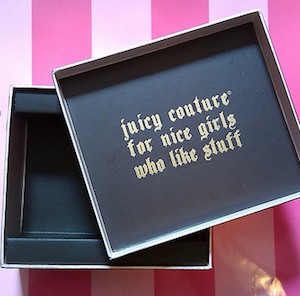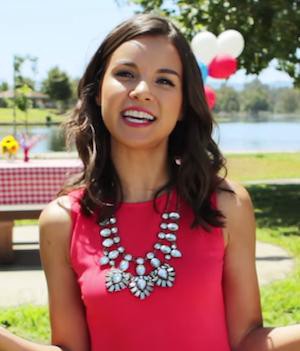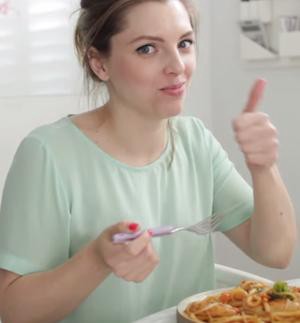My Imaginary Friends: The Beauty YouTuber Economy
by Alice Bolin

I quit my job at the end of this February to participate in a writing residency at my apartment funded by myself. After being mentally and physically numbed by my service sector job almost every day for five months, I found myself abruptly, uneasily alone and well rested. It is often these moments of emptiness in my life when unexpected manias and fetishes overtake me, some new stupid interest I can devote all my free time to. This time, it was YouTube videos of women recommending beauty products. Obviously.
My own relationship to the world of cosmetics is conflicted and idiosyncratic. I refuse to do anything to myself that I find boring or unnecessary — my body hair is usually au naturale, and I don’t own a blow dryer. I can’t think of a time when I wore a full face of makeup in the past four years. But I also spent most of the first 20 years of my life lying around reading fashion magazines, and I devote significant time once a week to painting a new design on my fingernails. I can get down with a beauty regime that is about creativity, delight, self-invention, and self-care — not one that’s about obligation.
In a way that philosophy is embodied by these YouTube “beauty junkies,” who seem genuinely interested in products for products’ sake. Beauty YouTube is a huge and powerful corner of the site — there are a legion of these self-made beauty gurus, and the top dogs like Bethany Mota and Zoella have millions of subscribers. Theirs is a highly developed YouTube genre, with their videos falling in a number of predictable categories.
Many do tutorials of different makeup looks, often with an abashed caveat that they are not trained professionals. They do haul videos, in which they show what they bought on recent shopping trips. Most do a monthly, gushy roundup of their favorite products. There are “empties” videos, in which they talk about products they’ve used up; “what’s in my bag” videos; skin care routine videos; lookbooks showing that season’s outfits; and product reviews.
If these do not sound like they could possibly be interesting, trust me — they’re not. Many of the videos are long, pushing the fifteen-minute mark, extended spiels on thirty dollar cleansing waters or forty-five dollar Christian Dior lip balm. Beauty YouTube is less traditionally entertaining than it is narcotic, something you can tune in and out. Each video is made up of long, precise descriptions the women provide of the color, texture, consistency, feel, and smell of each product they discuss. “It smells like hot chocolate,” popular beauty vlogger Tati said of a lip gloss on a recent haul of new drugstore products, “but not hot chocolate that’s already made. It smells like a packet of hot chocolate.”
The descriptions are so exact that they are hypnotizing, but this minute attention is also countered by the hyperactive energy that is a prerequisite for beauty YouTube personalities. Hyperbole is the currency in these videos — beauty vloggers are obsessed with everything. “Kenra Platinum Finishing Spray is life-changing,” Ingrid of the two million-subscriber channel MissGlamorazzi said recently, with a fervor no one who watches many product videos would bat an eye at. “There’s something indescribable about this deodorant,” London YouTuber essiebutton said in a favorites video. “It’s an absolute joy to use.” In a video about her favorite eyeshadow palettes, she said, “I genuinely feel like I could die if I don’t get the Lorac Pro Palette.”

Over-the-top enthusiasm is how these vloggers form relationships with their subscribers — there’s no way they would have such massive audiences if their viewers didn’t feel a connection with them. Many of them have humble, self-deprecating personas, calling themselves “weirdos” and “dorks”; MissGlamorazzi often puts “#INGRIDISWEIRD” on the screen after a goofy moment.
But these women are not weird. They’re not or nerdy or awkward. They’re pretty, generic girls next door, wholesome basic bitches who are grossed out by feet and the word “moist.” Many of them are covertly Christian, slipping Bible verses into the “About” sections of their channels. They’re the quintessential Nice Girls Who Like Stuff, as a famous advertisement for Juicy Couture once put it. Their approachability is carefully engineered and purposeful; the chatty gal pal stock character is obviously a marketing ploy.
It is not groundbreaking to suggest that channels devoted to products and shopping are trying to — gasp — sell something. Beauty YouTube has become big business, and these women monetize their channels in many ways. YouTube runs on ad sales, and it incentivizes the uploading of new content by sharing a cut of that ad money with its users, who are usually called “creators.” A creator’s income is determined by their individual CPI (Cost Per Impression), a rate YouTube pays per one thousand views that is more or less based on the creator’s popularity and consistency. YouTube is cagey about the actual dollar amounts, but popular vloggers easily make five figures a year just from YouTube ad sales.
And many of the most successful beauty YouTubers belong to the megalith multi-channel network StyleHaul, an agency that acts as an intermediary between vloggers and YouTube. StyleHaul negotiates a flat-rate CPI for each of their 4,000-plus channels, so, in theory, creators aren’t swaying with the whims of YouTube. They can also provide legal and marketing support and facilitate product endorsements, another big source of income for beauty vloggers.
Multi-channel networks, and the homespun charm of the creators they represent, are hugely appealing to a corporate world that still doesn’t really get YouTube. In March 2014, Disney bought another multi-channel network, Maker Studios, for $500 million. StyleHaul recently hired Paramount Studios’ vice president of business development to help create original series for its home channel, but its strength is still in the every-girl credibility of its legion of semi-independent contractors. Its channels’ 138 million collective subscribers dwarf the followings of YouTube channels run by the traditional fashion and lifestyle media.
This means that for StyleHaul’s model to be successful, its corporate power has to remain more or less invisible. It is obvious that beauty vloggers receive samples and do sponsored videos — it’s very common to see two or more tutorials in one week on different channels featuring the same newly released product line. Sometimes an entire channel will be sponsored. Netflix-sponsored videos on NikkiPhillippi, a channel with six hundred thousand subscribers. (“I watch Netflix literally everyday of my life,” Nikki says when she mentions their sponsorship.) Many YouTubers also maintain online stores that sell some of the things they recommend, so they actually get a direct cut from the products they’re shilling for. But the insane monetary value these channels have achieved because of ad sales goes unspoken.
It is safe to assume that beauty vloggers and bloggers borrow a lot of their expert vocabulary from women’s magazines, talking about products being “highly pigmented” or “having good color payoff” or “buildable” or “wearable.” But without meaning to, beauty YouTube has gone beyond emulating magazines, perfecting the rhetorical voice that the lifestyle media has been chasing for years, that of the sage best friend offering advice. When I read product blurbs in most magazines now, they sound fake and bizarre, like they’re trying so hard. I was shaking my damn head at an article in Women’s Health that described a portable sunscreen as, “like that short guy you call when you need a wedding date, this is cute and convenient.”

This is why I am endlessly and insidiously more motivated to buy BB creams and gel eyeliners that vloggers recommend than ones magazines do. Despite how calculated beauty YouTubers likeability is, I can’t help it — I like them. My favorite is essiebutton, a Canadian living in the UK, who is the funnier and less prudish than most beauty vloggers. “Let’s talk about feet, bay-bee” she sang to the tune of “Let’s Talk About Sex” before discussing a foot cream. She did a non-beauty favorites video in which one of her favorites was Canadian milk-in-a-bag. I love the unconventional haul video she and her boyfriend did about a flea market they went to. “We have a problem,” her boyfriend said into the camera: “We love junk.”
And the women of beauty YouTube seem to genuinely like one another. They mention videos they enjoyed and recommend channels in their favorites videos. They often make guest appearances on one another’s channels. The two largest contingents of beauty vloggers are in Los Angeles and London, and it is not uncommon for them to travel across the world to meet up. I don’t think it’s a coincidence that once I starting spending all day alone in my apartment, I was drawn to a group of nice virtual girls who just want to talk to me about tinted lip balm.
It’s the imaginary friend phenomenon that is common to all social media — as the most famous generic click-bait headline formula, “Is Facebook making us lonely?”, unsubtly stabs at. Social media sells companionship at the expense of marketing data. It turns out the pretend company of approachable, beautiful women is all that is necessary to sell to the most valuable of all demographics, women ages fourteen to thirty-four. No wonder vloggers’ friendship is worth millions.
Alice Bolin is a writer living in Los Angeles. You can find her on twitter @alicebolin.